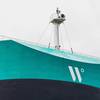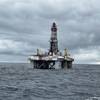source: The World Offshore Pipelines & Umbilicals Report II – Douglas-Westwood Ltd
The installation of almost 50,000 km of pipeline is forecast over the next five years in the new second edition of The World Offshore Pipelines and Umbilicals Report 2002-2006, published today by leading offshore analysts Douglas-Westwood and offshore data specialists Infield Systems.
According to the report’s lead author, Dominic Harbinson of Douglas-Westwood, “This total represents an increase of 44 percent over the previous 5-year period, and will require a global Capex of almost $53.6 billion. Three regions dominate the market, accounting for almost 60 percent of forecast pipeline lengths and over half of forecast global Capex.” The three regions are: North West Europe (with a forecast spend of $11.4 billion), Asia Pacific ($9.5 billion) and the US Gulf of Mexico ($8.2 billion). Harbinson adds, “Our perception is that the potential for ‘upside’ is particularly strong in the US Gulf region. We estimate that this could boost pipeline Capex there to just over $9.9 billion.”
The report also forecasts a total of 13,560 km of umbilical installations over the 2002-2006 period, representing a potential 70 percent increase on lengths installed in 1997-2001. Total Capex for the umbilical sector over the 2002-2006 period is forecast at almost $2.9 billion, almost double the $1.5 billion estimated spend over the 1997-2001 period. North West Europe is expected to maintain its position as the leading umbilical market with a spend of over $1.2 billion – an increase of almost 80% on the previous five-year period. The US Gulf of Mexico is the second major market, with a 16% share of forecast Capex, followed by the Asia Pacific region with 11%.
In the flexible pipe segment, a total of just over 2,300 km of pipe is forecast for installation worldwide over the 2002-2006 period, 11% up on the previous five-year period. Brazil is by far the most important regional market, accounting for almost 60% of the global total. Although there is evidence of a decline in demand in the second major flexpipe region - North West Europe - it is expected that this will be offset by increases not just in Brazil but also in the Asia Pacific and West Africa regions. Capex in the flexpipe segment is forecast at almost $5.4 billion for the period.
“The underlying driver for activity in the offshore pipeline and umbilicals sectors is the growth in global energy demand. In addition, there are four marked trends within the offshore sector that can be expected to contribute strongly to growth in the pipeline and umbilical sectors. These trends are: the increased uptake of subsea production technology; the industry’s move into deep waters; the growth in long-distance gas transmission projects; and the establishment of long-distance power and communications links to offshore facilities,” said Dr Roger Knight, Infield Systems data manager.
The new report provides an overview of the various stages of the project process in the pipeline and umbilical sectors, ranging from route selection and design, through production, installation, operations and decommissioning. The report examines historic, planned and possible activity over the 1997-2006 period in both global and regional contexts. The analysis includes parameters such as line diameter, length and water depth. The forecasts focus on market volume (length in km) and market value (in US$ million) in the pipeline and umbilical sectors, and are given in both global and regional terms. A series of case studies are presented which contextualise the information given in the main body of the report.
The second edition of this report presents an essential overview of the current and future prospects for the offshore pipeline and umbilical industries. The pipelines covered include flowlines, risers, export systems, trunk lines and lines to/from production terminals. The umbilicals covered include control lines, power lines and optical fibre communication lines associated with offshore developments.
The World Offshore Pipelines and Umbilicals Report II contains 200 pages, 146 figures and 66 tables, and is available now from Douglas-Westwood
Sponsored Content
Experience Custom Yacht Signs and Designs Tailored to Perfection!

April 2025
 Read the Magazine
Read the Magazine

 Read the Magazine
Read the Magazine
This issue sponsored by:

Looking Back: U.S. Maritime Industry Steps Up in Wake of FSK Bridge Collapse
Subscribe for
Maritime Reporter E-News
Maritime Reporter E-News is the maritime industry's largest circulation and most authoritative ENews Service, delivered to your Email five times per week







